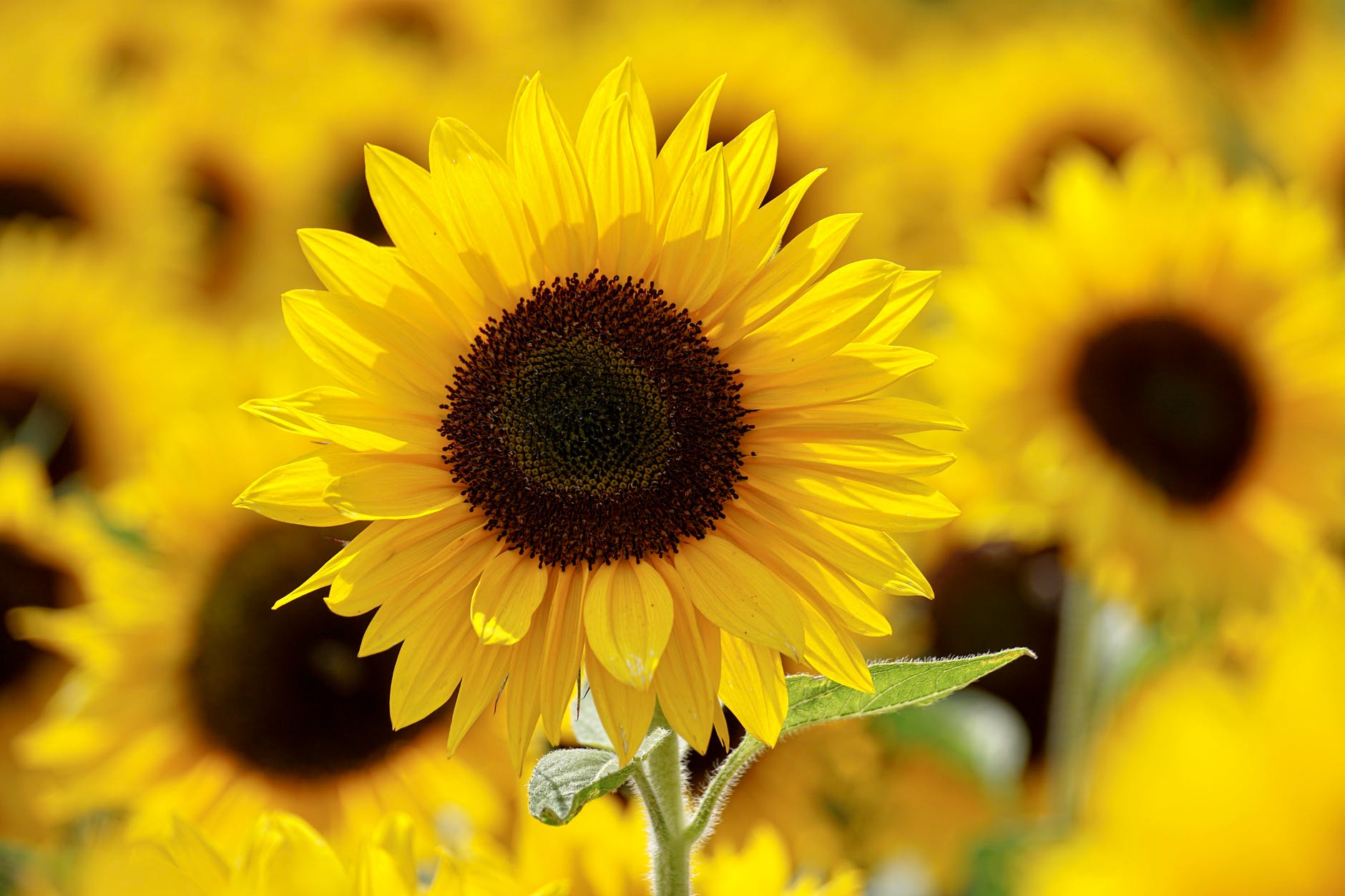The key difference between soy lecithin and sunflower lecithin is that soy lecithin extraction utilizes chemicals such as acetone and hexane, while sunflower lecithin extraction happens via cold pressing without using any chemical.
Lecithin is a fatty, yellow to a brown coloured substance naturally present in plant and animal tissues. Lecithin provides several health benefits due to its major component phosphatidylcholines. It can lower bad cholesterols in our body. Furthermore, it is able to increase immune function, reduce digestive distress, improve memory, help in brain development and aid in breastfeeding. Due to these benefits, lecithin is taken as a supplement. Therefore, the commercial extraction of lecithin can be done from soybeans and sunflowers. However, the extractions and quality of lecithin may vary based on the source. Hence, this article mainly focuses on the difference between soy lecithin and sunflower lecithin.
CONTENTS
1. Overview and Key Difference
2. What is Soy Lecithin
3. What is Sunflower Lecithin
4. Similarities Between Soy Lecithin and Sunflower Lecithin
5. Side by Side Comparison – Soy Lecithin vs Sunflower Lecithin in Tabular Form
6. Summary
What is Soy Lecithin?
Soybean is a popular source for the extraction of lecithin. In fact, it is a cost-effective source of lecithin. Hence, lecithin extraction from soybean commonly is done in many countries. The extraction of lecithin from soybean involves chemicals such as acetone and hexane.

Figure 01: Soy Lecithin
However, consuming soy-derived lecithin is less healthy than sunflower lecithin since most of the soybean crops are genetically modified. Moreover, the extraction is not natural, unlike sunflower lecithin. Despite having the above-mentioned facts, soy lecithin is one of the most widely used food additives.
What is Sunflower Lecithin?
Sunflower lecithin is a type of lecithin we derive from sunflower. Sunflower lecithin is becoming popular over soy lecithin due to several reasons. The extraction of sunflower lecithin is natural and uses the method of cold pressing. Moreover, it does not involve chemicals.

Figure 02: Sunflower
Another major reason is that sunflower is not a genetically modified plant-like soybean. Overall, sunflower Lecithin is safer and healthier than soy Lecithin.
What are the Similarities Between Soy Lecithin and Sunflower Lecithin?
- It is possible to take soy lecithin and sunflower lecithin as supplements.
- Both can lower bad cholesterol levels in our body.
- Moreover, they improve digestive health, brain function, make skin softer and reduce the risk of breastfeeding complications.
- We use both lecithins in the preparation of food, cosmetics, and medications.
- They extend the shelf life of preparations.
- Further, they act as an emulsifier.
What is the Difference Between Soy Lecithin and Sunflower Lecithin?
Soy lecithin comes from soybeans while sunflower lecithin comes from sunflower. However, soy lecithin extraction is a chemical method, while sunflower lecithin extraction is a natural method. So, this is the key difference between soy lecithin and sunflower lecithin.
Furthermore, sunflower lecithin is safer and healthy than soybean lecithin. Therefore, this is also a major difference between soy lecithin and sunflower lecithin.

Summary – Soy Lecithin vs Sunflower Lecithin
Lecithin is an essential nutrient. It is a fatty substance present naturally in many food sources, including animal and plant tissues. Soy lecithin and sunflower lecithin are two types of lecithin based on the source of extraction. Soy lecithin extraction takes place chemically while sunflower extraction takes place naturally. Moreover, sunflower lecithin is safer and healthier than soy lecithin. So, this is the summary of the difference between soy lecithin and sunflower lecithin.
Reference:
1. Leonard, Jayne. “Lecithin: Benefits, Risks, and Types.” Medical News Today, MediLexicon International, Available here.
2. Link, Rachael. “Brain-Boosting Supplement or Unhealthy Additive?” Dr. Axe, 13 Dec. 2018, Available here.
Image Courtesy:
1. “Lecitina de soja en Montevideo” By Mx. Granger – Own work (CC0) via Commons Wikimedia
2. “1169084” By Susanne Jutzeler (CC0) via Pexels
ncG1vNJzZmivp6x7pbXFn5yrnZ6YsqOx07CcnqZemLyue8OinZ%2Bdopq7pLGMm5ytr5Wau26%2FzrJkpZ2TnsGptc1mmKecXajCr7LLqK6eql2hsqS106Ggp2c%3D